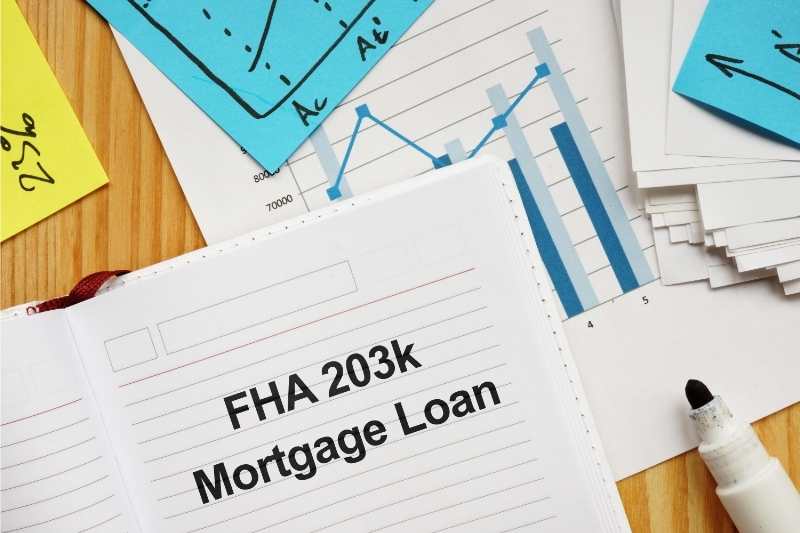Key takeaways
- Multifamily finance is the process of financially securing a property with loans that support a healthy return on investment (ROI).
- Multifamily properties could be worth investing in and, with hard work, can boast an ROI as high as 15%.
- The four types of multifamily loans are short-term, conventional, government-backed, and portfolio.
- Owner-occupied multifamily properties are a solid option for first-time investors or homeowners.
- If traditional loans don’t work for you, you may explore using hard money lenders, repair allowances, and crowdfunding for investors.

Disclaimer: This content is for informational purposes only, you should not construe any such information as legal, tax, investment, financial, or other advice. Nothing contained on our site constitutes a solicitation, recommendation, endorsement, or offer by ButterflyMX or any third-party service provider. ButterflyMX is not a financial adviser. You should always seek independent legal, financial, taxation, or other advice from a licensed professional.
Investing in multifamily properties could be a wise real estate investment strategy. However, financing multifamily properties can be complex and, at times, overwhelming. In this guide, we’ll help you explore ways to get the best return on your investment (ROI) during the financing process.
First, we’ll cover what multifamily finance is. Then, we’ll review the four types of multifamily loans and which will benefit you the most. Finally, we’ll explore alternative multifamily financing strategies.
This post covers:
- What is multifamily finance?
- Is owning a multifamily worth it?
- The 4 types of multifamily financing loans
- The benefits of owner-occupied multifamily properties
- Alternative multifamily financing strategies
What is multifamily finance?
Multifamily finance is the method investors use to secure funds to purchase a multifamily property. Financing multifamily properties is possible through loans from banks and other financial institutions.
The exact type of loan, terms, multifamily financing rates, and the total amount of money lent vary greatly.
These specifics depend on several factors, including the:
- Investor’s intentions for the property.
- Current real estate cycle.
- Specific city and state where the property’s located.
- Investor’s financial history.
Is owning a multifamily worth it?
Owning a multifamily property could be a great investment. However, it requires a substantial amount of work.
You’ll need to:
- Craft a financial plan.
- Implement a management strategy.
- Research the real estate industry for the latest trends.
- Market or hire a marketing team to find prospective residents.
If you do all of the above, you’ll likely see a hefty return on your investment.
What is a good ROI for multifamily properties?
A successful ROI for multifamily properties will be between a 5% and 15% annual return on investment. This discrepancy depends on current market conditions, including the real estate cycle.
It’s worth noting that landlords earn an average income of $97,000 per year — more than 44.8% of the national average.
What is a good leverage ratio in real estate?
Your leverage in real estate is your debt-to-equity ratio. A healthy leverage in real estate is three or higher.
To calculate your leverage ratio in real estate, divide your debt by your equity. For example, if your mortgage is $600,000 and your equity is $200,000, then your ratio is three and can be considered good.
The 4 types of multifamily financing loans
When it comes to financing multifamily properties, your primary concern is going to be finding a loan. Fortunately, there are several types of apartment loans that you may qualify for. Below we examine each one and how it applies to you.
The four types of multifamily loans are:
- Short-term multifamily loan
- Conventional multifamily loan
- Government-backed multifamily mortgage
- Portfolio multifamily loan

1. Short-term multifamily loan
Financing multifamily properties can involve both short and long-term loans. Short-term loans are used for both purchasing and renovating multifamily properties.
Short-term loans are often called bridge loans because they typically occur between two major transactions. For example, purchasing one property before selling a previous property, or renovating a property before renting it out to applicants.
These loans typically last less than five years. This can be a pretty short period to pay back a loan. So, it’s important to review the terms of a short-term multifamily loan thoroughly to ensure you’ll be able to pay it off in time.
These loans may best suit investors who want to renovate properties and quickly sell them.
2. Conventional multifamily loan
As the name suggests, a conventional multifamily loan is the most common type of multifamily loan. It involves taking out a mortgage with a mortgage association at a pre-determined interest rate.
Mortgage associations can include private lenders and credit unions.
These loans will typically require a multifamily loan down payment. For first-time property owners, the conventional down payment may be around $10,000. For investors who have owned previous properties, this down payment can be as high as 20% of the total value of the property. However, these costs all depend on who an investor receives a loan from.
Conventional multifamily loans may best suit investors interested in up to four-unit multifamily financing.
3. Government-backed multifamily mortgage
These are loans provided by government agencies for investors who are eligible for certain benefits.
These agencies can include the FHA (Federal Housing Administration) and the HUD (Department of Housing and Urban Development). In fact, both the FHA and HUD typically give loans to applicants with low credit scores. However, they charge higher interest rates than those found in conventional loans. Moreover, these loans tend to last for at least 30 years.
Government-backed mortgages also include VA loans. These are loans offered through the U.S. Department of Veterans Affairs. On the opposite end of the spectrum, they have lower interest rates than conventional loans.
These loans will have the most value for investors who need five-unit multifamily investing or higher — such as apartment buildings. These loans require a much smaller down payment than conventional loans.

4. Portfolio multifamily loan
Portfolio multifamily loans are provided directly by commercial financial institutions such as banks. As a result, they’re much more open to negotiation than the other three loans. So their terms, qualifications, and other criteria are much more relaxed.
Portfolio multifamily loans are usually granted to investors with a large “portfolio” or other properties, but not always. Further, they can also be used by multifamily investors when refinancing a property.
These loans may best suit investors who don’t qualify for conventional loans or investors seeking multiple properties.
The benefits of owner-occupied multifamily properties
An owner-occupied multifamily property is one where you, the property owner, actually live in one of the units on the property. In addition to securing a home for yourself, this is beneficial because owner-occupied multifamily financing offers some of the most affordable investment options in real estate.
Owner-occupied multifamily properties:
- Feature low-interest rates.
- Require a down payment of as little as 3%.
- Have less strict application requirements.
- Offset mortgage costs.
- May be great for first-time real estate investors.
Learn how to invest in multifamily real estate:
Alternative multifamily financing strategies
The four aforementioned multifamily financing loans are the typical way most investors finance multifamily properties. However, there are always other options depending on your needs.
This is especially applicable to properties you’re planning on fixing — or if you’re looking for additional financing to repair and renovate a property.
Alternative multifamily financing strategies include:
- Hard money lenders. These are usually provided by private companies or investors at high-interest rates. Similar to short-term multifamily loans, these are high-risk thanks to those high-interest rates. However, if you can’t get approved conventionally, this can quickly provide you with valuable capital for a property.
- Repair allowance. Before purchasing a property, you should overlook any necessary repairs. You can then negotiate with the seller and receive the projected operating expense of repairs after completing the sale. From here, you can do the repairs yourself and pocket the money you saved or hire reliable contractors to do the work for you.
- Crowdfunding. Through online marketplaces such as GoFundMe, you can receive large amounts of capital split from a small pool of investors. To crowdfund, pitch the merits of a certain property and what you expect the annual ROI to be. With good enough sales skills, you’ll secure direct loans with next to no interest rate. Talk about unorthodox! Then, if the property is a success, these investors may stick with you for your next property.






